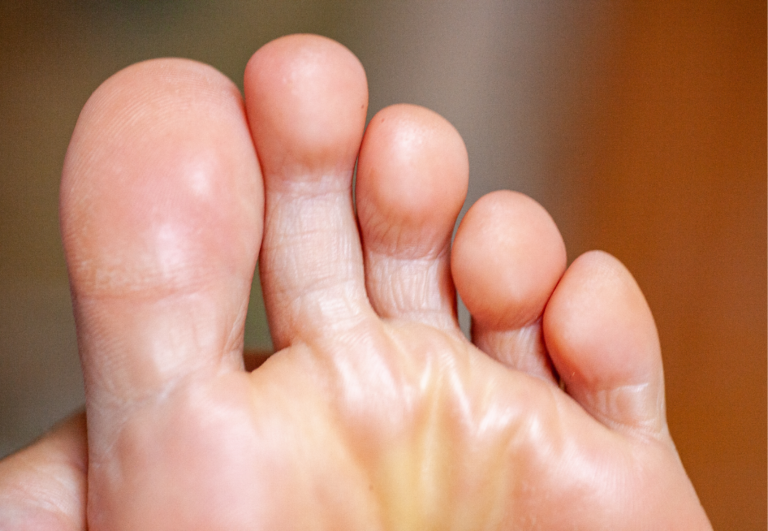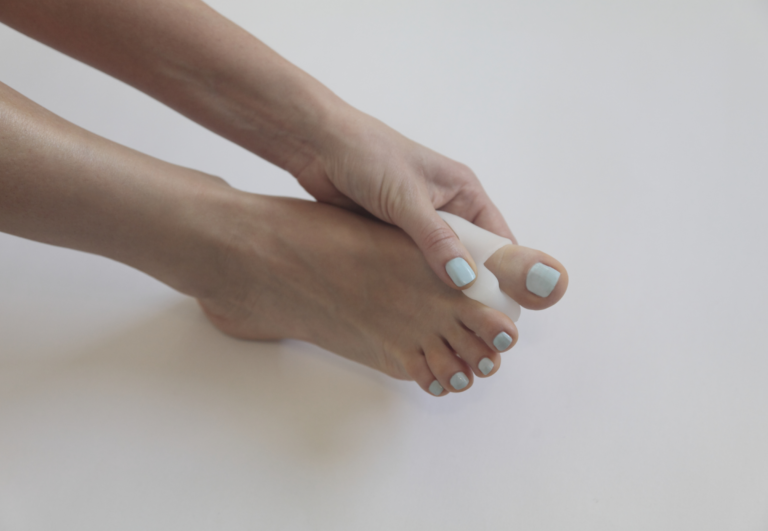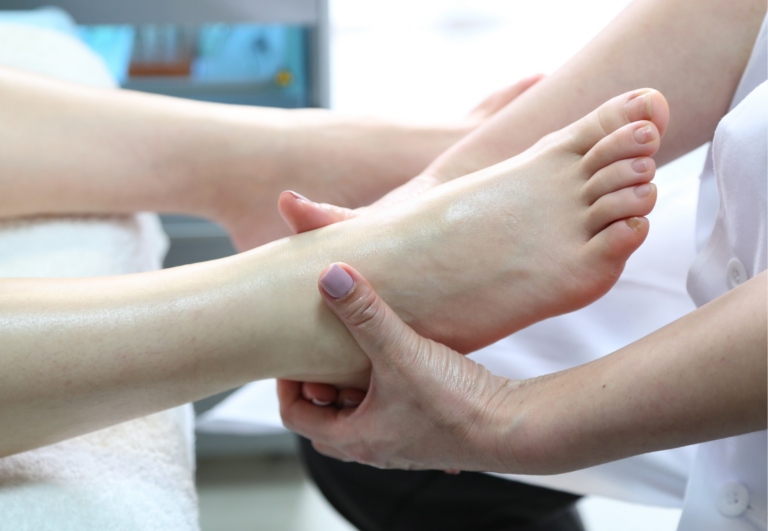Exercises for Toe Mobility: Enhance Flexibility and Strength
As someone with experience using toe spacers and focusing on toe mobility, I understand the importance of keeping our toes agile and strong. Our toes are fundamental to maintaining balance and stability in our daily activities, whether walking, running, or even standing. Just like other parts of our body, they require regular exercise to maintain their function and health. Toe mobility exercises are a simple yet effective way to enhance foot strength, improve flexibility, and even provide relief from discomfort.
Integrating toe exercises into daily routines can lead to better overall foot mechanics and contribute to a healthier gait. For individuals who experience foot discomfort or those looking to improve their athletic performance, focusing on toe mobility can be particularly beneficial. These exercises are designed to be easy to follow and can be performed anywhere, from the comfort of your home to a break at the office, ensuring that you can work on your toe health no matter your lifestyle.
Keeping toe health in mind, I’ve put together a selection of exercises and stretches aimed to improve toe mobility. These routines are practical, do not require special equipment, and are suitable for anyone regardless of their level of fitness. Regular practice of these exercises can help make the toes more pliable and less prone to injury, making every step you take healthier and more comfortable.
Why Are Toe Mobility Exercises Important?
In this section, I’ll detail the crucial role of toes in overall foot mechanics and the advantages of enhancing their mobility.
Anatomy of the Foot
My feet are complex structures comprising bones, joints, muscles, and tendons. Each foot has 14 phalanges, which form my toes, and five metatarsals, forming the arch. The big toe, or hallux, plays a pivotal role in balance and propulsion. Here’s an exercise routine to maintain and improve the strength and flexibility of these components:
- Toe presses: Start by grounding my feet and bending the knees slightly. Press my toes into the floor and hold for a count of three before releasing.
- Toe spreading: While standing or sitting, spread my toes apart and hold the stretch for a few seconds before relaxing.
- Big toe stretches: Gently pull my big toe to the side, hold for a few seconds, then release. Repeat this several times on each foot.
- Heel raises: Lift my heels off the ground by pressing down with my toes. Hold the position momentarily at the top, then lower slowly back down.
By performing these exercises, I’m targeting the muscles around my toes and enhancing the flexibility and strength within my feet.
Benefits of Toe Mobility
Increased toe mobility benefits my entire body, from the ground up. Here’s why focusing on my toes can enhance my overall well-being:
- Balance and Stability: Strong, flexible toes help me maintain my balance and provide stability when I’m walking or performing physical activities.
- Ankle Mobility: Engaging in toe exercises can improve my ankle mobility, which in turn may reduce the risk of injuries.
- Joint Health: Regular mobility workouts keep my toe joints flexible, aiding in the prevention of conditions like arthritis.
- Muscle Engagement: Stronger toe muscles contribute to the proper function of my entire foot, helping to support the arch and maintain correct alignment through my lower extremities.
Integrating these mobility routines into my daily schedule doesn’t only keep my feet in top condition but also acts as a foundation for the overall health of my musculoskeletal system.
Toe Mobility Assessments
Assessing toe mobility is vital for understanding how well your toes can move and identifying any limitations that may affect your overall foot function or balance.
Simple Tests for Mobility
I recommend starting with basic assessments to determine your toes’ range of motion. Here’s a step-by-step routine:
- Toe Splay: While seated, place your foot flat on the ground and try to spread your toes as far apart as possible. Hold the position for a few seconds to assess your ability to splay your toes.
- Toe Extension: Lift your toes upward while keeping your heel on the ground to test toe extension. This reflects the mobility in toe lift and ankle dorsiflexion.
- Toe Curl: Attempt to curl your toes downward without moving the rest of the foot. This demonstrates your toes’ flexing capability and overall toe curl strength.
Keep a record of any pain or discomfort experienced during these exercises, as this indicates areas for improvement or the need for further assessment.
Identifying Limitations
Once you’ve tested your toe mobility, look for these signs:
- Pain or Discomfort: If any movement causes pain, this suggests possible inflammation or restrictions in that area.
- Reduced Range of Motion: Inability to perform any of the exercises fully or resembling the expected range of motion, such as not being able to lift or spread the toes adequately.
- Ankle Dorsiflexion: Notice if there is limited movement in the ankle, as poor ankle dorsiflexion can affect toe mobility.
By identifying these limitations, you can target specific areas with exercises tailored to improve toe mobility, like using toe spacers or engaging in stretches that focus on the toes and ankles.
Exercises for Toe Mobility
Incorporating exercises specifically designed for toe strength and flexibility can help improve balance and reduce the risk of injury. The following exercises require no special equipment and are simple to perform.
Stretching Techniques for Toes
Toe Raises:
- Stand with feet flat on the ground.
- Lift all your toes off the ground and hold for a few seconds.
- Slowly lower them back down.
Big Toe Stretch:
- While seated, place your foot on your thigh.
- Use your hand to gently pull the big toe up, down, and to the side.
Toe Stretches:
- Sit with legs extended.
- Flex your toes back towards your shin and hold for a count of five.
Ball Roll:
- While seated, roll a small ball under your foot to stretch the toes and foot arch.
Strengthening Exercises for Toes
Toe Yoga:
- While standing, try to lift each toe individually.
- Practice lifting all toes and then pressing each one down one by one.
Resistance Band Exercises:
- Loop a band around your toes.
- Extend your foot and toes to stretch the band, hold, and release.
These exercises and stretches provide a routine to help maintain toe and overall foot health. Remember to move slowly and never push your toes to the point of pain. Regular practice can help improve toe flexibility and strength over time.
Incorporating Mobility into Daily Activities

I know that keeping toes healthy and mobile enhances overall foot function and contributes to a stable gait cycle. It’s also crucial for activities such as standing, walking, and running. I’ll share my strategies for improving toe mobility which will ultimately benefit your full body mobility.
Habits for Healthy Toes
When considering toe health, daily habits make a significant impact. In my routine, bare feet time is essential; it strengthens and supports natural foot mechanics. Here’s a specific sequence to follow:
- Barefoot Balance: Stand barefoot, focusing on even weight distribution across both feet.
- Toe Splay: While standing, try to spread your toes apart without curling them.
- Heel Raises: Slowly lift onto your toes and lower back down, maintaining control.
- Walking: Take short barefoot walks, concentrating on the roll of the foot from heel to toe.
Incorporating these habits during normal daily movements can improve flexibility and comfort, aiding in better posture and support while training.
Exercise Integration
To blend toe mobility exercises seamlessly into daily activities, I ensure my routine is supportive of my needs. Here’s a breakdown:
| Activity | Toe Mobility Integration |
|---|---|
| Standing | Practice the Short-foot Drill: contracting the foot’s muscles to “shorten” it without curling the toes. |
| Walking | Focus on a heel-to-toe gait cycle, which supports toe mobility and full body coordination. |
| Running | Implement toe lifts before and after runs to maintain range of motion in the foot and ankle area. |
| Training | Include toe mobility drills as part of the warm-up and cool-down periods to prepare the feet for exercise. |
During walking, concentrate on the complete foot strike pattern to promote natural gait mechanics. And remember, whenever you are training, prioritize wearing shoes that provide both comfort and support to enable proper mobility work without restriction.
Advanced Techniques and Considerations
When delving into advanced toe mobility exercises, it’s crucial to use the right equipment and address existing foot conditions. This ensures an effective routine that can aid in recovery, prehab, and injury prevention.
Equipment and Tools
For boosting toe mobility, I often incorporate simple tools into my routine. A rubber band can be a game-changer for resistance exercises. Here’s a step-by-step routine I follow:
- Toe Pulls: Place a rubber band around all toes and spread them apart. Hold for 5 seconds and release. Repeat for 10 repetitions.
- Toe Curls: With a rubber band around the toes, attempt to curl your toes inward. Hold each curl for 3 seconds. Do 10 repetitions.
- Flex and Point: Using a small kettlebell to provide resistance, place it over your toes and practice flexing and pointing your feet. Perform 15 repetitions.
Remember that consistency is key. Engaging in these exercises daily can lead to improvements in toe strength and mobility.
Addressing Foot Conditions
Hammer toe, bunions, and hallux valgus are conditions that require specialized exercises. While I’m not a doctor, I’ve found that using toe spacers can aid in the realignment of the toes and provide relief. Here’s how I incorporate them:
- Toe Spacer Routine: Insert toe spacers between each toe and hold a seated position to let the toes stretch for about 5-10 minutes daily.
- Bunion Corrector: If suffering from bunions or hallux valgus, wearing a bunion corrector during the night may help in gradually realigning the toe joint.
- Plantar Fasciitis Focus: For plantar fasciitis, rolling a small, hard ball under the foot can help in loosening tight tissues.
For those with these conditions, such exercises and tools can complement your rehab process, but it’s important to consult a healthcare professional for personalized advice.





